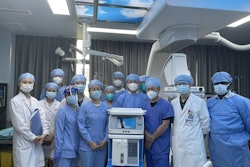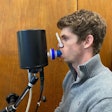
Honeywell is partnering with global contract development and manufacturing organization Recipharm to speed the development of a pressurized metered dose inhaler that will use Honeywell’s near-zero global warming potential (GWP) propellant.
Many patients with COPD are treated with inhalers that have a high global warming potential due to the use of hydrofluoroalkanes (HFAs) as propellants. Honeywell’s Solstice Air is a hydroflouroolefin propellent that is currently in clinical development, which has 99.9% less global warming potential than those that use HFAs.
Laura Rieinhard, vice president and general manager of Honeywell Foam and Industrial Products, said the inhaler will be a big step forward in reducing the environmental impact of COPD treatment.
“Through our collaboration with Recipharm, the increased use of near-zero GWP propellant will help reduce the environmental impact of the life-saving medical treatments patients need, without sacrificing performance,” she said.
Chris Hirst, president of Recipharm’s Advanced Delivery Systems unit, said the partnership with Honeywell help speed development of the inhaler and get it to market faster using Recipharm’s existing resources.
“Our collaboration is supported by Recipharm’s investment in manufacturing at our Holmes Chapel, UK, site, and the further development of the Bespak valve range to ensure the required product performance,” he said.
Bespak valves have been developed by Recipharm and are optimized for use with products containing Honeywell’s Solstice Air propellant. Recipharm is expanding its pressurized metered dose inhaler product development and manufacturing to meet increased demand from pharmaceutical companies.
Honeywell has invested more than $1 billion in research, development and new production capacity for its Solstic Air technology, which has helped avoid the potential release of the equivalent of more than 326 million metric tons of carbon dioxide into the atmosphere.























